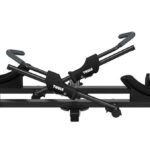Burning calories is a key goal for many who turn to exercise, and an exercise bike is a fantastic tool for achieving this right in the comfort of your home or at the gym. Understanding how many calories you burn on an exercise bike can help you track your progress and stay motivated. This guide will explore the methods for calculating your calorie expenditure during your exercise bike workouts, ensuring you get the most out of every session.
Understanding Calorie Burn on an Exercise Bike
Exercise bikes are effective for burning calories because they provide a cardiovascular workout that engages major muscle groups. The intensity and duration of your cycling session play crucial roles in determining the total calories burned. Whether you’re aiming for a leisurely ride or an intense training session, knowing how to estimate your calorie burn can be insightful. There are primarily two methods to calculate this: using power output and using METs (Metabolic Equivalents of Task).
Calculating Calories Burned: Power Output Method
For a more precise calculation, especially if your exercise bike has a power meter, you can use your power output. This method is grounded in the physics of work and energy. The formula to estimate calories burned based on power output is:
calories = ((Power × T) / 4.18 ) / 0.24
Where:
Poweris your average power output in watts during the exercise.Tis the duration of your cycling activity in seconds.4.18is the conversion factor from Joules to calories.0.24represents the estimated efficiency of the human body during cycling (around 24%).
If you’re unsure about your power output, you can use online cycling wattage calculators to estimate it based on your cycling speed and resistance levels.
Calculating Calories Burned: METs Method
If you prefer a simpler estimation or don’t have power data, the METs method is a user-friendly approach. MET, or Metabolic Equivalent of Task, is a ratio representing the energy expenditure of an activity relative to your resting metabolic rate. Different activities have different MET values. For exercise biking:
- Leisure biking is around 4 METs.
- Vigorous biking, like racing, can be 16 METs or higher.
- A general average for moderate cycling is often considered to be around 8 METs.
The formula for calculating calories burned using METs is:
calories = T × 60 × MET × 3.5 × W / 200
Where:
Tis the duration of activity in hours.METis the metabolic equivalent for your chosen biking intensity.Wis your body weight in kilograms.
This formula provides a good estimation based on the intensity and your body weight.
Factors Affecting Calorie Burn on an Exercise Bike
Several factors influence how many calories you burn on an exercise bike:
- Intensity: Higher intensity workouts burn more calories per minute.
- Duration: Longer workouts naturally lead to a greater total calorie burn.
- Body Weight: Heavier individuals tend to burn more calories performing the same activity as lighter individuals.
- Resistance Level: Increased resistance on the exercise bike can increase muscle engagement and calorie expenditure.
- Fitness Level: Beginners might burn more calories initially compared to fitter individuals for the same workout, as their bodies are working harder relative to their capacity.
Conclusion
Using an exercise bike is an excellent way to burn calories and improve your cardiovascular health. Whether you choose to calculate your calorie burn using power output for precision or METs for simplicity, understanding these methods can help you tailor your workouts for effective calorie burning. Remember to consider factors like intensity, duration, and your fitness level to maximize your results on the exercise bike. For further insights into the broader benefits of cycling, explore resources on the positive impacts of biking on your life and its ecological advantages compared to driving.

